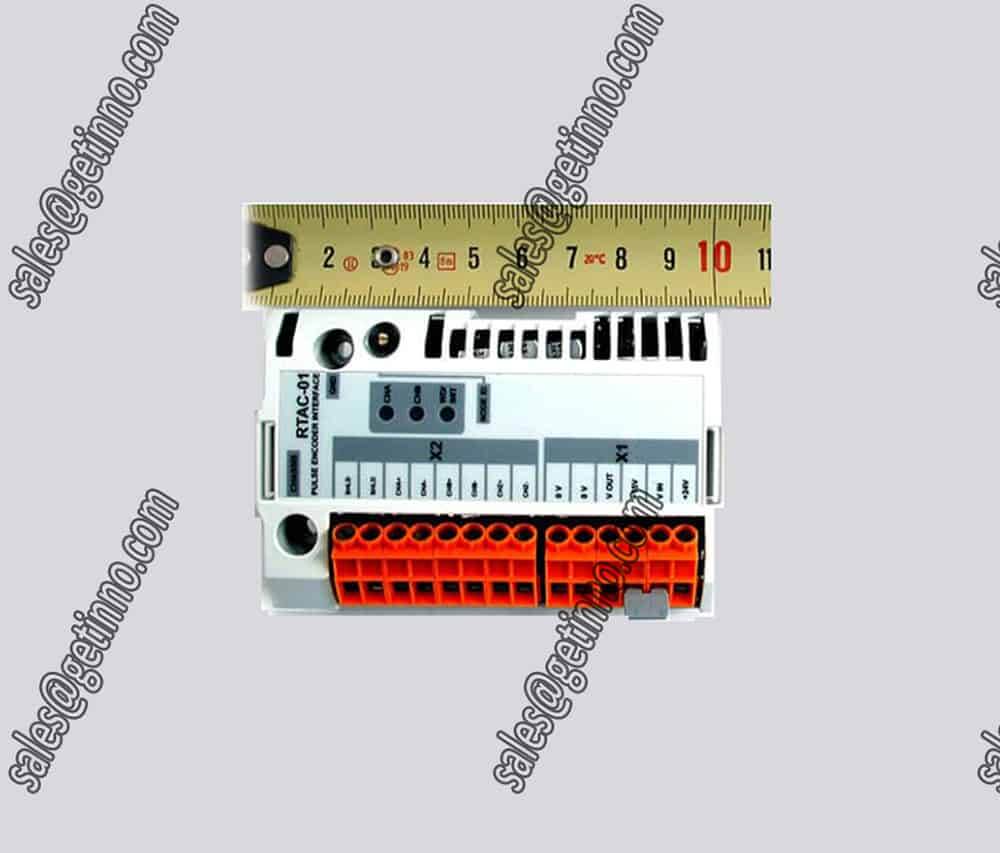Zhongshan Breakthrough New Road in Robot Industry
AsiaIndustrial NetNews: Starting from the 28th, Zhongshan’srobotThe industry may usher in a historic opportunity.
Among the projects signed at the Zhongshan “3.28” Economic and Trade Fair in 2017, there are two related to Robots: the South China headquarters of Harbin Institute of Technology Robot Group will be settled in Ma’an Island, Cuiheng New District; Shenzhen Candela Group, which has mastered flywheel energy storage technology, will also Headquarters moved from Shenzhen to Zhongshan District.
Robots are known as “the jewel in the crown of equipment manufacturing industry“. With the task of building a “world-class advanced equipment manufacturing base”, can Zhongshan achieve “overtaking on a curve” in this cross-regional competition?
“Power Player” is here
“We will use Harbin Institute of Technology’s South China headquarters as a platform to focus on the production of core components,industrySoftware design and development, peripheral equipment supporting supply and other related industrial links, create a robot and intelligent manufacturing industry cluster, and through upstream and downstream cooperation in the industrial chain, play synergistic benefits, and quickly improve the overall scale of Zhongshan’s robotics industry. “
In this year’s “3.28” investment fair in Zhongshan, the South China Headquarters of Harbin Institute of Technology Robot Group became one of the hottest focuses, arousing widespread concern in the business community. Han Jiecai, vice president of Harbin Institute of Technology and academician of the Chinese Academy of Sciences, introduced that HRG (Harbin Institute of Technology Robot Group), which is about to settle in Ma’an Island, Cuiheng New District, will build the group’s South China headquarters, Sino-US innovation center and intelligent manufacturing public service platform in Zhongshan.
Industry insiders believe that the establishment of this platform will directly rewrite the manufacturing layout of the Pearl River Delta, and promote Zhongshan to enter the first echelon of robots.
Who is Harbin Industrial Robot Group? Why does it have such energy?
The reporter inquired and learned that Harbin Institute of Technology is one of the most well-known engineering colleges in China and one of the earliest units engaged in robotics research in China. China’s first spot welding robot, first arc welding robot, first wall-climbing robot, and first lunar rover were all born here. Most domestic robotics research institutions and enterprises have backbones from Harbin Institute of Technology. Therefore, Harbin Institute of Technology is known as the “Whampoa Military Academy” in the field of robot manufacturing.
HRG (Harbin Institute of Technology Robot Group), which will be located in Cuiheng New District, Zhongshan, is a high-tech enterprise jointly established by Harbin Institute of Technology, Heilongjiang Provincial Government and Harbin Municipal Government. Its main businesses include Robot Parts, industrial robots, service robots, and special robots. ,automationIt has more than 270 patents in various fields such as equipment, and is one of the leading enterprises in domestic robots and intelligent equipment.
Only two years after its establishment, Harbin Institute of Technology has made breakthroughs in various core robot technologies, the most representative of which is the reducer.Controller, ServomotorAnd the reducer, known as the “core three” of the robot, has long been monopolized by the “four major families” abroad (ie ABB in Switzerland, kuka in Germany, Fanuc in Japan and Yaskawa Electric).
After continuous scientific research, the Harbin Institute of Technology Group finally overcame this technical difficulty and developed the first reducer with completely independent intellectual property rights in China. At the same time, this achievement has also achieved the transcendence of the international advanced level: the size is reduced, the structure is simplified, and the problem that the RV reducer cannot be miniaturized has been overcome. According to media reports, this reducer will soon be put into production. Once mass production is achieved, the overall cost of domestic industrial robots will be greatly reduced.
A single tree cannot make a forest, and a flower alone is not spring. In addition to HRG’s South China headquarters in Ma’an Island, a robotics company from Shenzhen named Candela Technology will also move its headquarters to Zhongshan East District.
It is understood that Candela Technology is a professional technology company invested and held by Qianhai Fortune Financial Holding Group. Although it has been established for less than a year, Candela Technology has a core R&D team of 160 people, and its R&D investment in 2016 exceeded 20 million yuan.
More importantly, the Candela core team also has an important Robotic core technology: flywheel energy storage battery. Once this kind of energy that is different from conventional energy can be broken through, an intelligent service robot that can move autonomously will come out, which will bring infinite imagination to the Robot Industry.
There is even better news: On March 22, Candela Technology has signed a strategic cooperation agreement with Harbin Institute of Technology, and will work with the Zhongshan Municipal Government to build the Guangdong-Hong Kong-Macao Intelligent Equipment Industry Technology Research Institute, the Guangdong-Hong Kong-Macao Intelligent Equipment Industry Guidance Fund and the Academician Expert Workstation , Make full use of the talents and discipline advantages of Harbin Institute of Technology to promote scientific and technological cooperation and achievement incubation.
Zhongshan has been laying out the tuyere
Statistics show that China has become the world’s largest industrial robot market for three consecutive years. In 2015, China’s industrial robot sales reached 68,000 units, accounting for about 1/4 of global sales.
As the “jewel in the crown” of the equipment manufacturing industry, robots have always been the “true love” of Zhongshan people.
In August 2016, Zhongshan issued the “Zhongshan Intelligent Manufacturing 2025 Plan (2016-2025)”, which proposed that by 2018, 50% of the city’s industrial enterprises above designated size will complete a new round of technological transformation; build robots with an output value exceeding 100 million yuan There are about 20 manufacturing enterprises and integrated enterprises. By 2025, it will become the national leading area of intelligent manufacturing, and the intelligent design industry will form a regional brand in Zhongshan.
Since then, Zhongshan has started to look for a robot “seed enterprise”, which coincides with Harbin Institute of Technology, which is looking for an industrialization base.
On September 29 of that year, at the Pearl Suit Fair held in Foshan, Han Jiecai, vice president of Harbin Institute of Technology, signed a framework agreement on the “high-end unmanned equipment industrialization” project on behalf of HRG with Zhongshan. The total investment of the project is 8 billion yuan, and it is planned to build a national leading and world-class robot and high-end unmanned intelligent equipment industrial base in Cuiheng New District, and strive to form an industrial agglomeration effect and scale within five years.
1 2 Next page > page
Outside of Harbin Institute of Technology, Zhongshan has not stopped looking for “dark horses”.
In January 2017, Chen Rugui, Secretary of Zhongshan Municipal Party Committee, led a delegation to inspect a group of well-known robotics companies such as Candela Technology Innovation Co., Ltd., BYD Co., Ltd., Ubisoft Technology Co., Ltd., and DJI Innovation Technology Co., Ltd. After two months of hard work, Zhongshan successfully “incorporated” Candela and BYD.
“Seeing Shenzhen’s innovation-driven development results, I feel inspiring and benefit a lot. Compared with Shenzhen, Zhongshan still has a big gap in innovation and development. We will see the best and strive to catch up.” This trip to Shenzhen gave the Zhongshan delegation the determination to “see the good and think together”.
“We will follow the established project plan, pay close attention to the implementation, take out the engineering prototype of the flywheel energy storage battery and spherical robot as soon as possible, and realize the industrialization and the project settled in Zhongshan as soon as possible.” Ma Shaofu, chairman of the board of directors of Shenzhen Qianhai Zhifu Financial Holding Group, introduced. , It is expected that in 2017 the company will complete the application of 242 robot patents.
Han Jiecai said that HRG will lead Zhongshan’s robot industry to attack upstream through core technologies, and turn Zhongshan into a core robot R&D and manufacturing base in China.
In terms of industrial base, both Shenzhen on the east bank of the Pearl River and Guangzhou on the west bank of the Pearl River are obviously superior to Zhongshan. Why did Harbin Institute of Technology choose Zhongshan?
“The reason why Zhongshan was chosen is because Zhongshan is positioned as an intelligent manufacturing base and is very eager for technology and talents. The municipal party committee and the municipal government have a lot of support.” Han Jiecai said that this kind of support for start-up technology enterprises is a mega city. do not have.
Zhongshan Model VS Dongguan Model
In the Pearl River Delta, when it comes to robots, people will naturally think of Dongguan and Foshan.
Since 2010, Dongguan Songshan Lake District has introduced the “Motion Control and Advanced Equipment Technology International Innovation Team” represented by Li Zexiang, the founder of DJI, to “lay the first foundation” for the local robotics industry.
Since the establishment of the “Songshan Lake International Robot Industry Base” in November 2014, robot companies have quickly gathered in Songshan Lake. By March this year, there were more than 150 robot manufacturing enterprises in Songshan Lake, with an annual output value of 3 billion yuan. From chips to motion control technology to intelligent perception technology, a pyramid-style intelligent echelon has basically been formed here.
Foshan is another peak that Zhongshan Robot needs to overcome and catch up. In January this year, Midea Group successfully acquired kuka Group, one of the “Four Families” of robots. The process was turbulent, and the results were exciting.
On March 6, Nanhai District also released new policies to support the robot industry and promote the transformation of village-level industrial parks. It plans to arrange more than 200 million yuan in the whole chain to support the robot industry within three years.
In this cross-regional competition, Zhongshan is actually a latecomer, and is destined to no longer use the traditional “routine” to catch up.
On March 24, the domestic heavyweight robotics research institution – Shenyang National Institute of Intelligent Robots Co., Ltd. held its inaugural meeting and the first general meeting of shareholders at Harbin Institute of Technology. Among the 14 shareholders behind this institution, Zhongshan Zhongying Industrial Investment Co., Ltd. controlled by the Zhongshan State-owned Assets Supervision and Administration Commission (SASAC) is among them, alongside state-owned enterprises in Beijing, Shanghai and Guangzhou, as well as a number of leading robotics companies.
On the surface, this is Zhongshan’s “idle chess” move. But it is this move that makes Zhongshan’s idea of developing robots fundamentally different from other surrounding cities.
Data from China’s Ministry of Industry and Information Technology shows that in 2016, there were more than 3,400 domestic robot companies, including manufacturing and service industrial robots. In 2015 alone, 36 cities across the country listed the robotics industry as a key development project, offering preferential policies such as tax relief, credit, and technology.
The other side of the coin is that a large number of robot companies do not make money or even lose money. Zhao Yong, an expert in the robotics industry, estimates that Chinese robotics companies are either losing money or barely making the cut. In 2015, China sold a total of 10.4 billion yuan of industrial robots, 85% of which were imported; the industry estimates that the average annual revenue of each robotics company is less than 10%. million yuan.
The fundamental reason for this situation is that domestic robot companies lack core technology, especially the three core components such as controller, servo motor and reducer. In 2015, about 75% of precision reducers were imported from Japan, and the main suppliers were Hamernaco, Nabtesco and Sumitomo; more than 80% of servo motors and drives were imported, mainly from Japan, Europe and the United States. The lack of core technology means that it is controlled by people, and most of the profits of industrial robots will eventually flow into the pockets of the “Four Families”.
“The three core components account for more than 70% of the total cost of the robot body, and currently all rely on imports.” Han Jiecai said that Harbin Institute of Technology has mastered the core technology and talents, and hopes that with the support of the Zhongshan Municipal Party Committee and Municipal Government, it will gradually move from the downstream of the robot. Go upstream and compete with the “Four Families” abroad in the robot value chain.
Han Jiecai said that Zhongshan will become the core base of domestic robot R&D and manufacturing by then.
And this is exactly Zhongshan’s idea of breaking out of the beach.
The Links: 3BSE013234R1 3HAC14279-1 IGBT
Pre: ABB Bar 3HAC029024-001 Next: Pilz: Five reasons to choose modular ...




